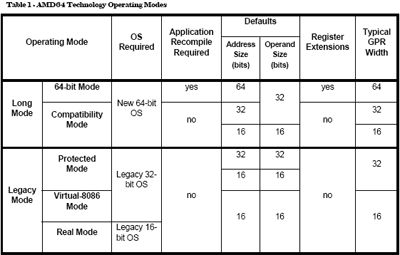Both the Opteron and the Athlon 64 contain 8 extra
registers useable only in 64-bit mode, which should increase application
performance significantly.

One
of the largest problems in modern computer design is the presence of
bottlenecks, or areas of low performance which slow an otherwise fast
system down.
In most modern computers, data intended for the
video and main memory needs to be passed to and through the Northbridge chip on
the motherboard, and data from other sources like USB connections, PCI slots or
hard-drives must pass through the Southbridge chip, then the Northbridge.
With the amount of information that needs to be
squeezed through the various data buses into the processor to be operated on,
bottlenecks inevitably develop, where the processor is waiting for the necessary
bits to be delivered by the I/O subsystem feeding it.
As processors get consistently faster every few
months, while data bus breakthroughs are irregular, the issue perpetuates
itself.
AMD has
attempted to get around this constant problem by equipping its 64-bit processors
with two advantages, internal DDR memory controllers and
Hypertransport links. AMD
has built the memory controller (normally a part of the
motherboard to which the processor is attached), directly into their Opteron and
Athlon 64 CPUs.
As you can imagine, this gives a considerably
reduces the time it takes the processor to access memory, since while data still
needs to travel between the processor and the physical memory, communication
with the controller that arranges the data flow does not need to be passed
outside the processor, reducing the amount of computing cycles lost while
waiting for the memory.
Another benefit is the fact that memory traffic no
longer needs to run between the processor and the Northbridge chip on the
motherboard which traditionally provides the memory controller, reducing
bottlenecks. The second part of the package is support for Hypertransport
input/output technology.
